
HOME
INTRO
SYMBOLS
ALMANAC
ECONOMY
GEOGRAPHY
STATE MAPS
PEOPLE
FORUM
NEWS
COOL SCHOOLS
STATE QUIZ
STATE LINKS
BOOK STORE
MARKETPLACE
NETSTATE.STORE
NETSTATE.MALL
GUESTBOOK
CONTACT US


Texas State Stone
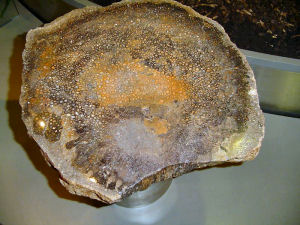
Texas State Stone: Petrified Palmwood
This file is licensed under the Creative Commons
Attribution-Share Alike 2.5 Generic License.
Petrified palmwood is more properly referred to as a fossil rather than a stone.
Regardless, Petrified palmwood became the official state stone when Governor Preston Earnest Smith signed House Concurrent Resolution No. 12 on March 26, 1969.
House Concurrent Resolution No. 12 also named the Texas blue topaz the official state gem of the State of Texas.
In Texas, petrified palmwood is principally found in eastern counties near the Texas Gulf Coast.
Though House Concurrent Resolution No. 12 identifies the state stone as petrified "palmwood," the stone is often referred to as petrified "palm wood."
H.C.R. No. 12
House Concurrent Resolution
WHEREAS, The State of Texas has not officially designated a state gem or a state stone; and
WHEREAS, The Texas Gem and Mineral Society has adopted appropriate resolutions in support of designating the TEXAS BLUE TOPAZ as the official State gem and PETRIFIED PALMWOOD as the official State stone; and
WHEREAS, It is appropriate that the State Legislature take the necessary action whereby the TEXAS BLUE TOPAZ and PETRIFIED PALMWOOD may be officially named as the State gem and the State stone, respectively; now, therefore, be it
RESOLVED, By the House of Representatives of the State of Texas, the Senate concurring, that the recommendations of the Texas Gem and Mineral Society be and are hereby adopted, and that the TEXAS BLUE TOPAZ be and is hereby declared to be the official State gem and PETRIFIED PALMWOOD be and is hereby declared to be the official State stone of Texas.
It[petrified palm wood] comes from palm trees in the Oligocene Epoch, between 20 - 40 million years ago, give or take a few years.
The characteristic spotted look of palmwood is from the rod like structures within the grain of the wood. Depending upon the angle the lapidary uses to cut the stone, these structures show up as spots, tapering rods, or lines.
Petrified palm wood is a variety of chalcedony and is very hard, around 7 1/2 on the Mohs scale of hardness and takes a wonderful polish which makes it a great stone for jewelry.
("Bernardine Fine Art Jewelry")
Texas Law
Petrified palmwood was named the official State stone of Texas by House Concurrent Resolution and is not, therefore, listed in the Texas Statutes.
Only a few of Texas' myriad symbols were actually adopted by an act of the legislature and written into the Texas Statutes.
Sources...
"House Concurrent Resolution No. 12." Legislative Reference Library of Texas. Legislative Reference Library of Texas, n.d. Web. 28 Nov 2011.
"Petrified Palm Wood Facts, Information and Description." Bernardine Fine Art Jewelry. Bernardine Fine Art Jewelry, n.d. Web. 1 Dec 2011.
Shearer, Benjamin F. and Barbara S. State Names, Seals, Flags and Symbols: A Historical Guide Third Edition, Revised and Expanded. Westport, Conn: Greenwood Press, 3 Sub edition, 2001.

Texas State Gem: Petrified Palmwood
This file is licensed under the
Creative Commons Attribution-Share Alike 2.5 Generic License.
Additional Information
Petrified Wood: Article explains how wood becomes petrified wood, by Robert James FGA, GG.
Petrified palm wood: Texas Natural Science Center, The University of Texas at Austin.
Petrified Wood: From DesertUSA.com, exploring the Southwest.
Texas Gemstones :
by Elbert A. King, Jr. Bureau of Economic Geology, The University of Texas at Austin.
:
by Elbert A. King, Jr. Bureau of Economic Geology, The University of Texas at Austin.
State stones: Complete list of official state gemstones from NETSTATE.COM.
More symbols & emblems: Complete list of official Texas state symbols from NETSTATE.COM.
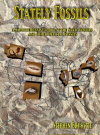
Stately Fossils
Stephen Brusatte
Stately Fossils: A Comprehensive Look at the State Fossils and Other Official Fossils, buy Stephen Brusatte. 234 pages. Publisher: Fossil News (September 2002) The only book in print on the subject of state fossils, Stately Fossils offers an in-depth treatment of the natural and cultural history behind the official fossils of every state... and more! The book contains 80 photos and over 300 references to further information.
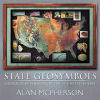
State Geosymbols
Alan McPherson
State Geosymbols: Geological Symbols Of The 50 United States, Alan McPherson. 196 pages. Publisher: Publisher: AuthorHouse Publishing (October 5, 2011) From the tourmaline of Maine to the black coral of Hawaii, our state's official geological symbols or geosymbols are as uniquely diverse as the terrain and character of the 50 states themselves. In this reference book over 150 state geosymbols are presented with informative text that highlights their adoptive legislation, geologic and social history. Color photo montages add visual interest to the pages.

Fossils Tell
of Long Ago
Fossils Tell of Long Ago, by Aliki. 32 pages. Publisher: Collins (March 21, 1990) Reading level: Grades Kindergarten - Grade 3. Sometimes it's the imprint of an ancient leaf in a rock. Sometimes it's a woolly mammoth, frozen for thousands of years in the icy ground. Sometimes it's the skeleton of a stegosaurus that has turned to stone.
A fossil is anything that has been preserved, one way or another, that tells about life on Earth. But you can make a fossil, too--something to be discovered a million years from now--and this book will tell you how.

Fossil
Paul Taylor
Fossil (DK Eyewitness Books), by Dr. Paul D. Taylor. 72 pages. Publisher: DK Publishing, Inc. (August 2, 2004) Reading level: Grades 4 - 7. Here is an original and exciting new look at fossils - the remains of long-vanished animals and plants. Stunning real-life photographs of the spectacular remains of ancient lives offer a unique "eyewitness" view of what fossils are, how they were formed, and how they lived millions of years ago. See pearls that are 50 million years old, a dinosaur's toe, a troublesome "snake" that was turned to stone, a fossilized human being, and a snail made of precious stones. Learn how fossils are formed, how trilobites have been preserved for 590 million years, where to look for a belemnite, and how fossils helped the pharaohs of ancient Egypt. Discover which are the most precious fossils in the world, where ammonites lived, how big mammoths were, what a devil's toenail looks like, and much, much more.
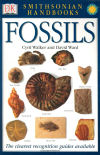
Fossils
Fossils (Smithsonian Handbooks), by Cyril Walker and David Ward. 320 pages. Publisher: DK Publishing, Inc. (May 15, 2002) Authoritative text, crystal-clear photographs, and a systematic approach make DK's Smithsonian Handbook of Fossils the most comprehensive and concise pocket guide to fossils of the world. Packed with more than 1,000 full-color photographs of over 500 fossils, this handbook is designed to cut through the complex process of identification to provide instant species recognitions.
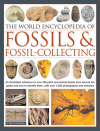
World Encyclopedia of
Fossils & Fossil-Collecting
Steve Parker
World Encyclopedia of Fossils & Fossil-Collecting, by Steve Parker. 256 pages. Publisher: Lorenz Books (December 25, 2007) Fossils can be discovered by anyone, and give us a window onto the amazing history of our planet. Ancient natural forms, from the simplest fungus to giant dinosaurs, can reveal the fascinating development of evolving life.
The main part of the book consists of an extensive directory of fossils, providing a comprehensive visual and factual compendium of more than 375 significant fossil types, ranging from the tiniest algae through mammoths and whales to giant dinosaurs such as Iguanodon - plus the varied types of human. Each and every fossil entry includes a large, full-colour photograph of the fossil itself, accompanied by a detailed factbox and a clear artwork that reconstructs the appearance of the original plant or animal. Additional feature boxes reveal fascinating related stories, such as the fossil discoveries that turned scientific thinking on its head and in-depth studies of specific fossil sites.
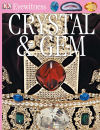
Crystal & Gem
Crystal & Gem (Eyewitness Books), by R.F. Symes and R.R. Harding. 72 pages. Publisher: DK Dorling Kindersley (June 25, 2007) Reading level: Ages 9-12. Be an eyewitness to the stunning natural beauty of crystals of every size, shape, and color -- and their remarkable uses for everything from surgeons' scalpels to silicon chips. Full-color photos. Learn about the formation and practical uses of crystals, semiprecious stones, and precious metals. "The dazzling full-color photographs on uncluttered pages make this a visual treat."--School Library Journal. Clip-art CD included.
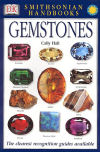
Gemstones
Cally Hall
Gemstones (Smithsonian Handbooks), by Cally Hall. 160 pages. Publisher: DK Dorling Kindersley 2 edition (May 15, 2002) The Smithsonian Handbook of Gemstones is packed with more than 800 vivid full-colour photographs of more than 130 varieties of cut and uncut stones, organic gemstones and precious metals. With authoritative text, clear photography and a systematic approach, this concise guide to identification enables you to recognize each gemstone instantly.
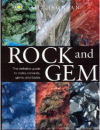
Rock and Gem
Ronald L. Bonewit
Rock and Gem, by Ronald Louis Bonewit. 360 pages. Publisher: Covent Garden Books; 1st edition (2008) From glittering gemstones to fascinating minerals and fossils, Rock and Gem is an incredible celebration of the Earth's buried treasures. Including specially commissioned photographs of more than 450 illustrious specimens and information-rich text, this book illustrates each stone¹s unique characteristics and its relationship to humankind through the ages. About the Author With more than 40 years experience as a geologist, prospector, and gem cutter, Dr. Ronald L. Bonewitz provides a unique perspective on the subject.

